Survive Any Dive Catastrophe!
It's natural to think that accidents always happen to other divers, those statistical John and Jane Does who court disaster by idiotically violating every rule in the book. And it's true, they take most of the heat. But even the most experienced and responsible divers aren't immune to bad rolls of the dice. How bad? Imagine getting tangled in one of the following 10 situations, each of which is guaranteed to scare the bejesus out of you. We'll start by saying the unwritten first rule for each dilemma is to remain calm and avoid panicking as you assess your nasty predicament. The next steps? Click through the gallery to find out.
It's natural to think that accidents always happen to other divers, those statistical John and Jane Does who court disaster by idiotically violating every rule in the book. And it's true, they take most of the heat. But even the most experienced and responsible divers aren't immune to bad rolls of the dice. How bad? Imagine getting tangled in one of the following 10 situations, each of which is guaranteed to scare the bejesus out of you. We'll start by saying the unwritten first rule for each dilemma is to remain calm and avoid panicking as you assess your nasty predicament. The next steps? Read more to find out.
No. 1: Surviving Extreme Weather
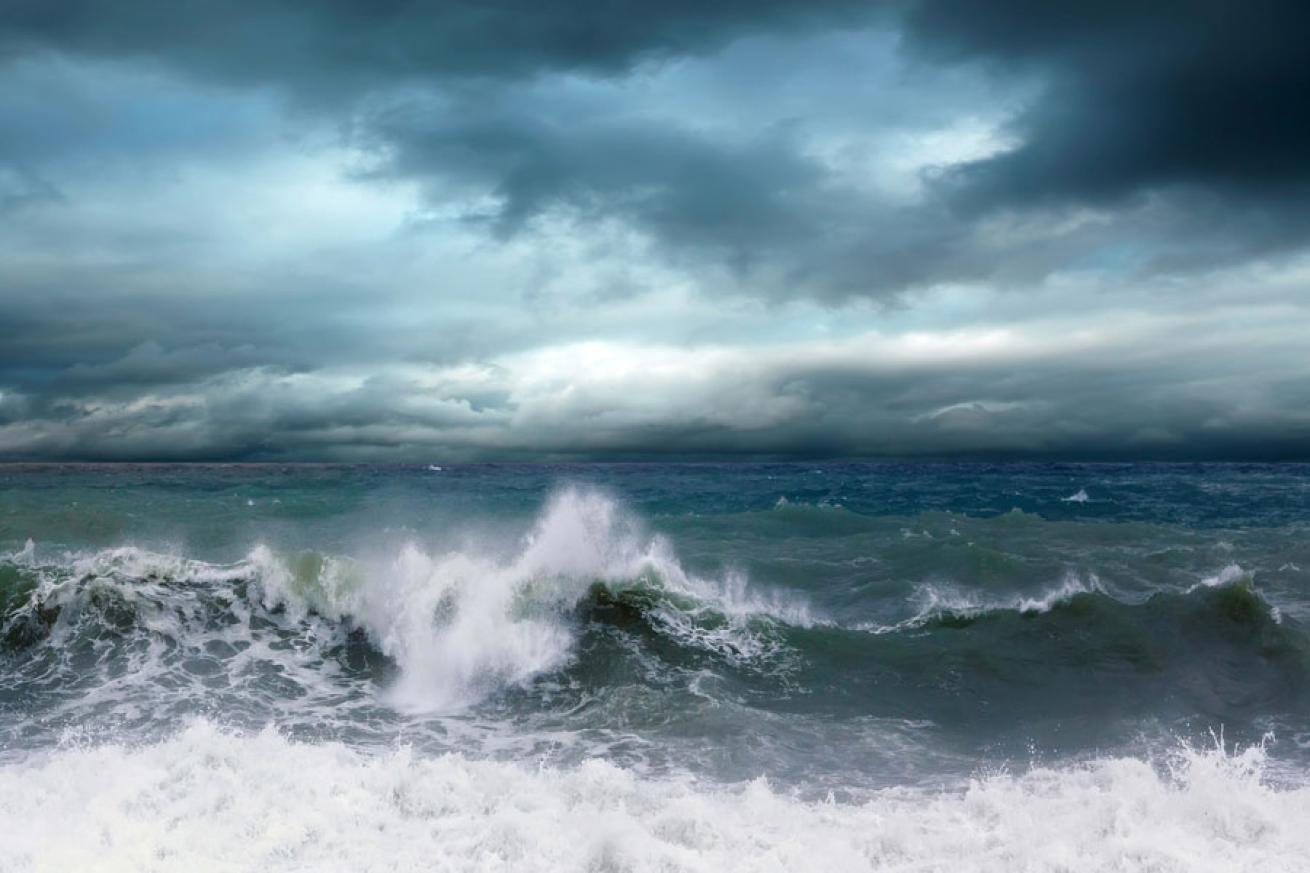
ShutterstockSurviving Extreme Weather
You surface to find the perfect storm raging, you're being pummeled by 10-foot swells, and the dive boat is nowhere in sight. Think it can't happen? It is unlikely, but in February 2014 seven Japanese scuba divers entered the water in good conditions and surfaced to a raging storm that had turned the ocean into a violent whirlpool. The five women who survived were found three days later, 12 miles from where they disappeared, clinging to a rocky reef. How can you survive an ordeal like this? Now what?
1. Inflate your BC. You'll need every ounce of energy to stay warm and slow the onset of hypothermia, and treading water to stay afloat increases your cooling rate by 35 percent.
2. Get into the HELP (Heat Escape Lessening Posture). Tuck your legs up to your chest and wrap your arms around them, which will slow heat loss from your body by 50 percent. Your survival time in open water varies greatly depending on water temperature, your body size, and whether you're wearing a full wetsuit. Survival time is almost unlimited in 80-degree Caribbean waters, while it's limited to one or two hours in water that's colder than 50 degrees.
3. Signal for help. Deploy a safety sausage (you do carry one, don't you?). Don't have a mirror? During the day, a shiny object — from your mask to a dive computer face — is one of the best signal devices available. Sweep the horizon to flash reflected light at a possible search vessels or aircraft. This signal can be seen up to 40 miles away.
4. Swim for shore only if rescue seems unlikely. If you are nearing a rugged shoreline, drop your tank before you land so it doesn't beat you senseless against the rocks.
No. 2: Running Out of Air With No Backup
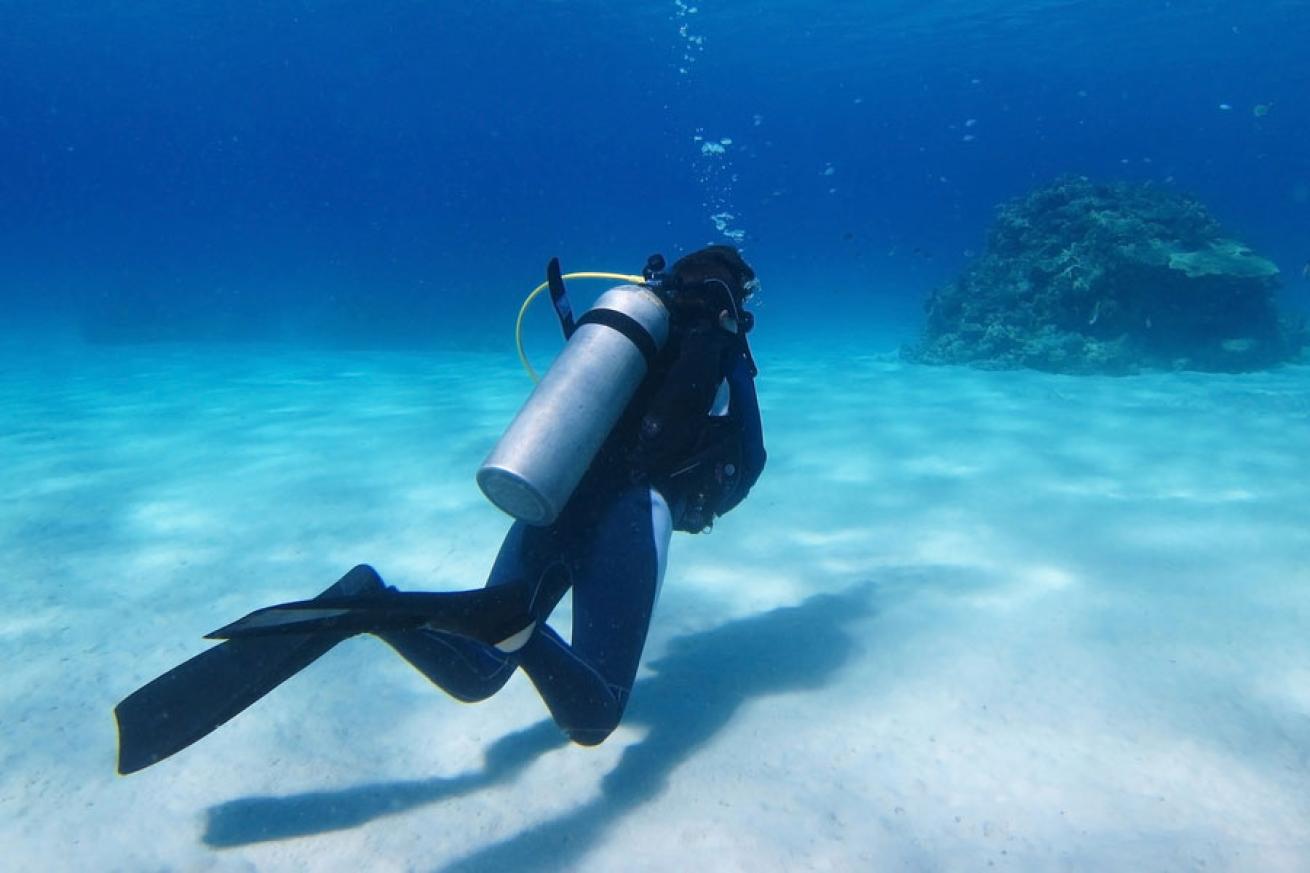
ShutterstockRunning Out of Air With No Backup
You're on the deepest dive of your life, pushing the limits of recreational diving at 130 feet, and suddenly you're sucking on a vacuum. Oh yeah, and your backup's missing. So is your buddy. It's time for an emergency ascent, but it's a long way up. Now what?
1. Drop everything you're carrying. That means ditching your weights, of course, and anything else — except your tank — that's holding you down. Leave any handheld tools behind, and that includes the expensive camera. You really don't' want this recorded anyway.
2. Exhale during your ascent to let expanding air escape from your lungs. As you ascend and external pressure drops, your tank may provide another breath or two of air.
3. Use the oral inflator to fill your BC at the surface.
4. Signal for help with the universally recognized distress signal — a hand waved above the head.
5. Once you get out of the water, monitor yourself for signs of decompression sickness. Remember that it may take more than six hours for them to become apparent. Even mild symptoms must be treated.
No. 3: Getting Disoriented When Your Computer Conks Out
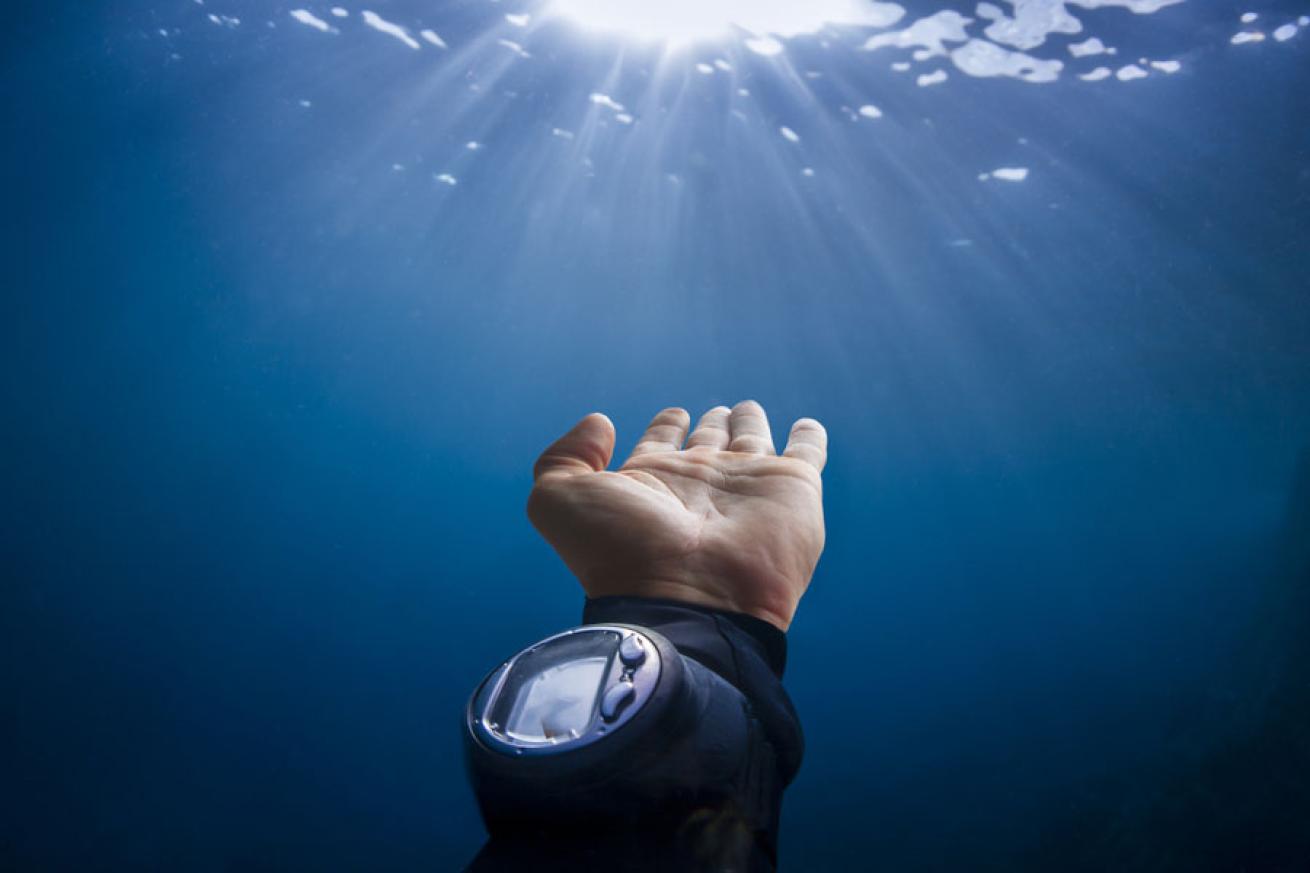
ShutterstockGetting Disoriented When Your Computer Conks Out
You're not sure how deep you are, how long you've been down, or how to plan your safety stop. You're flying blind. And your pressure gauge broke on your last trip. Now what?
1. Stop immediately and get your bearings. If you've been checking your depth regularly, you should have a rough idea of how deep you are. And if you're on or near the bottom, you should know the maximum depth of your dive.
2. Get your buddy's attention. Signal that something's wrong with a waggle of your hand, then signal an ascent.
3. Begin a controlled ascent. There should be no need for an emergency ascent — hopefully, you were monitoring your Air Remaining so you have a good idea of how much psi is in your tank.
4. Make a safety stop at 15 feet. The longer you stay here, the better, especially if you were nearing required decompression.
No. 4: Saving Yourself from a Panicked Buddy
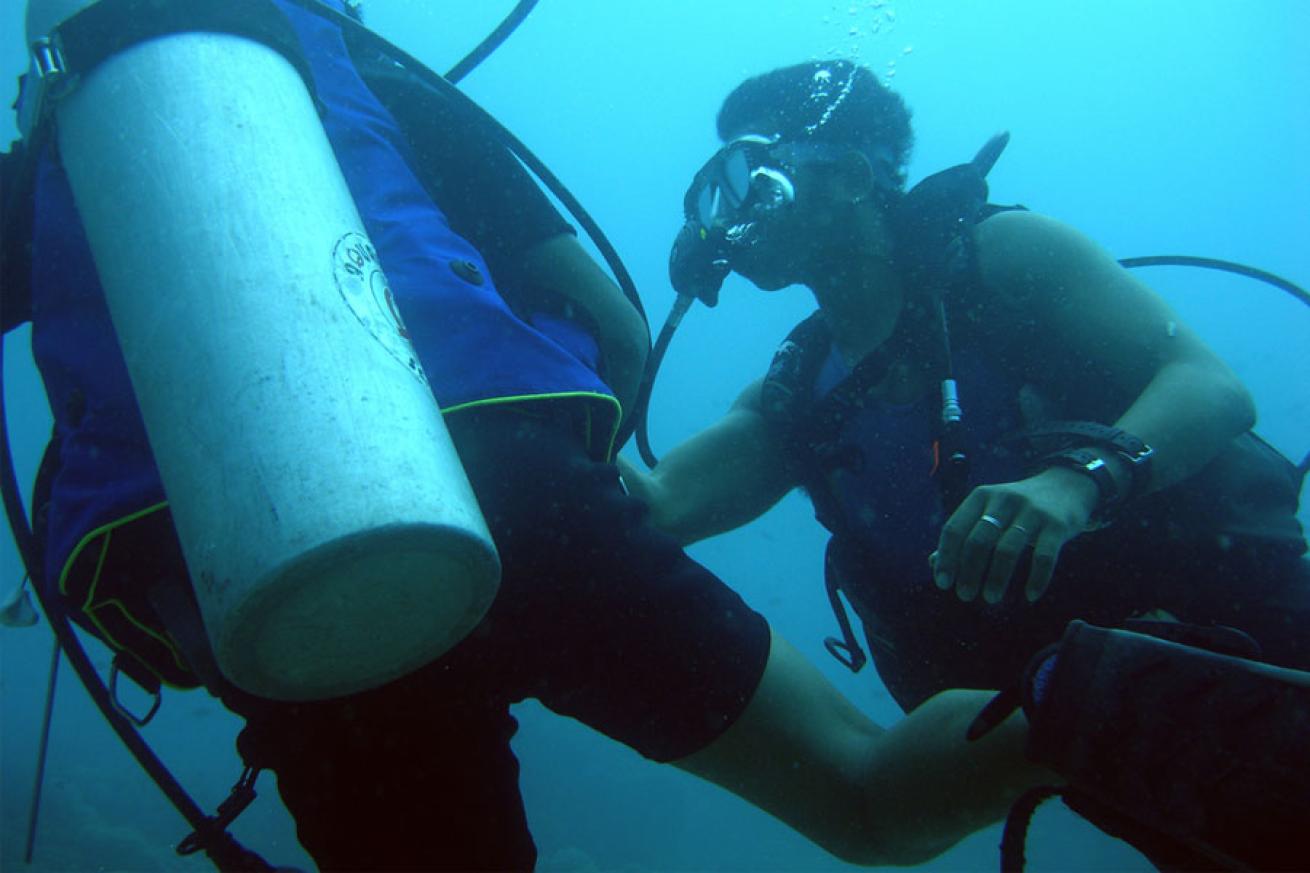
ShutterstockSaving Yourself from a Panicked Buddy
You've heard the grim tales of divers who hyperventilate, overbreathe their regulators and spit them out, and then drown with 1,000 psi left in their tank. Well, today that out-of-control diver is your very own buddy, and you're getting a crash course in the psychology of panic, which is far more common (and potentially dangerous) than equipment failure. Now what?
1. Approach cautiously when you see your buddy is in trouble. Use hand signals to determine his state of mind. Is he signaling that he's out of air? Or is he flailing dangerously?
2. Don't let a desperate buddy grab for your regulator and endanger you both. If he's out of air, unclip your octopus and hold it out toward him. Hold onto your buddy's BC — this way you can keep him at arm's length and prevent him from drifting away.
3. Let your buddy reestablish his breathing rhythm, unless he's still panicking, in which case you should proceed to the next step.
4. Make a controlled emergency ascent. If you don't have an octopus and your buddy's too confused to buddy-breathe, he'll do everything possible to rush to the surface and hold his breath all the way up. Don't let him.
5. At the surface, inflate both BCs and signal for pickup.
No. 5: Fighting an Extreme Current
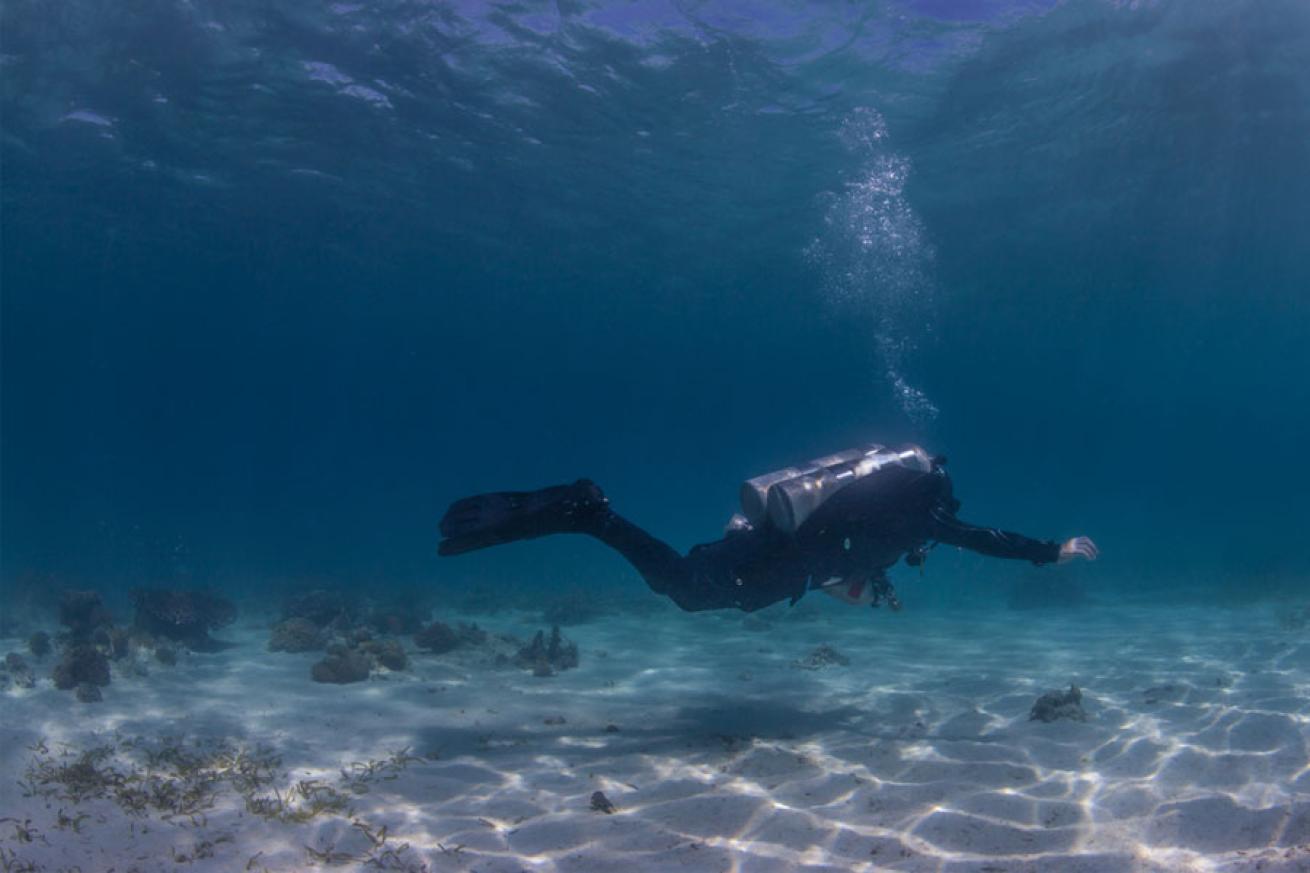
ShutterstockFighting an Extreme Current
You're diving at a site known for current and unpredictable tidal shifts, and you find yourself suddenly swept away by a massive 16-knot current that's pulling you out to sea or you're caught in a powerful riptide that's sucking you away from shore. Now what?
IN A RIPTIDE
1. Don't try to fight the current. Most riptide deaths result from swimming against the current to the point of exhaustion.
2. Swim parallel to the shore, across the riptide. If the riptide is sucking you away from the shore, it's better to wind up a mile down the beach than a mile out at sea. Most riptides are less than 100 feet wide and weaken rapidly on the seaward side of the sandbars that create them.
IN A CURRENT
1. Again, don't fight it. Defeat is inevitable, even if it's flowing at what seems like a moderate 3 or 4 knots. Instead, ascend to the surface.
2. At the surface, inflate your BC and signal for pickup. One arm held straight up with a clenched fist means you're OK, but need a pickup. Use a surface signaling device if the boat crew can't spot you.
No. 6: Getting Lost Underwater at Night. And Your Light Dies. And You've Lost Your Buddy.

ShutterstockNo. 6: Getting Lost Underwater at Night. And Your Light Dies. And You've Lost Your Buddy.
We don't want to know what you're doing on a night dive without a backup light, but suddenly you're enveloped in darkness, you've lost your buddy, and you can barely tell which way is up. Now what?
1. Orient yourself. Feel the exhaust bubbles coming out of your regulator and make sure you know which way is up. Now maintain your depth and location. Pay attention to your ears, which will tell you if you're ascending or descending.
2. Make a 360-degree turn and look for your buddy's light. Go slowly, because if your buddy's light is shining away from you, it will be hard to see.
3. Bang on your tank four times. The sound will attract your buddy's attention. You can also shout into your regulator — people respond to their names even when they can't seem to hear anything else.
4. If you spot your buddy, approach slowly. Think about it: How would you respond to a mysterious, silent sea creature grabbing you in the inky blackness of a night dive?
5. If you don't spot your buddy in one minute, ascend and look for him on the surface.
No. 7: Losing a Limb to a Shark

ShutterstockLosing a Limb to a Shark
Yes, you're more likely to get mauled by a lion than bitten by shark. And, yes, sharks need our help not our fear. But now that we've got your attention, it is possible to suffer a severe injury underwater from a host of hazards, including marine life. Now what?
1. Ignore the shark or other animal that's attached. Most attacks are one-bite, hit-and-run affairs.
2. Make a controlled emergency ascent unless you are losing a lot of blood — then make an out-of-air emergency ascent.
3. Stem blood loss. Once you're back on the boat apply pressure to the wound with a clean cloth or bandage. Use a tourniquet only as a last resort if you can't stop the bleeding any other way — you can use anything from twist ties to your knife strap.
4. If you've actually lost a finger, toe or limb and have it, keep it cool but don't put on ice (that causes tissue damage). Instead, seal in a plastic bag before putting it on ice. This will preserve the limb for up to 18 hours, enough time to get medical attention.
No. 8: Getting Caught in a Downdraft
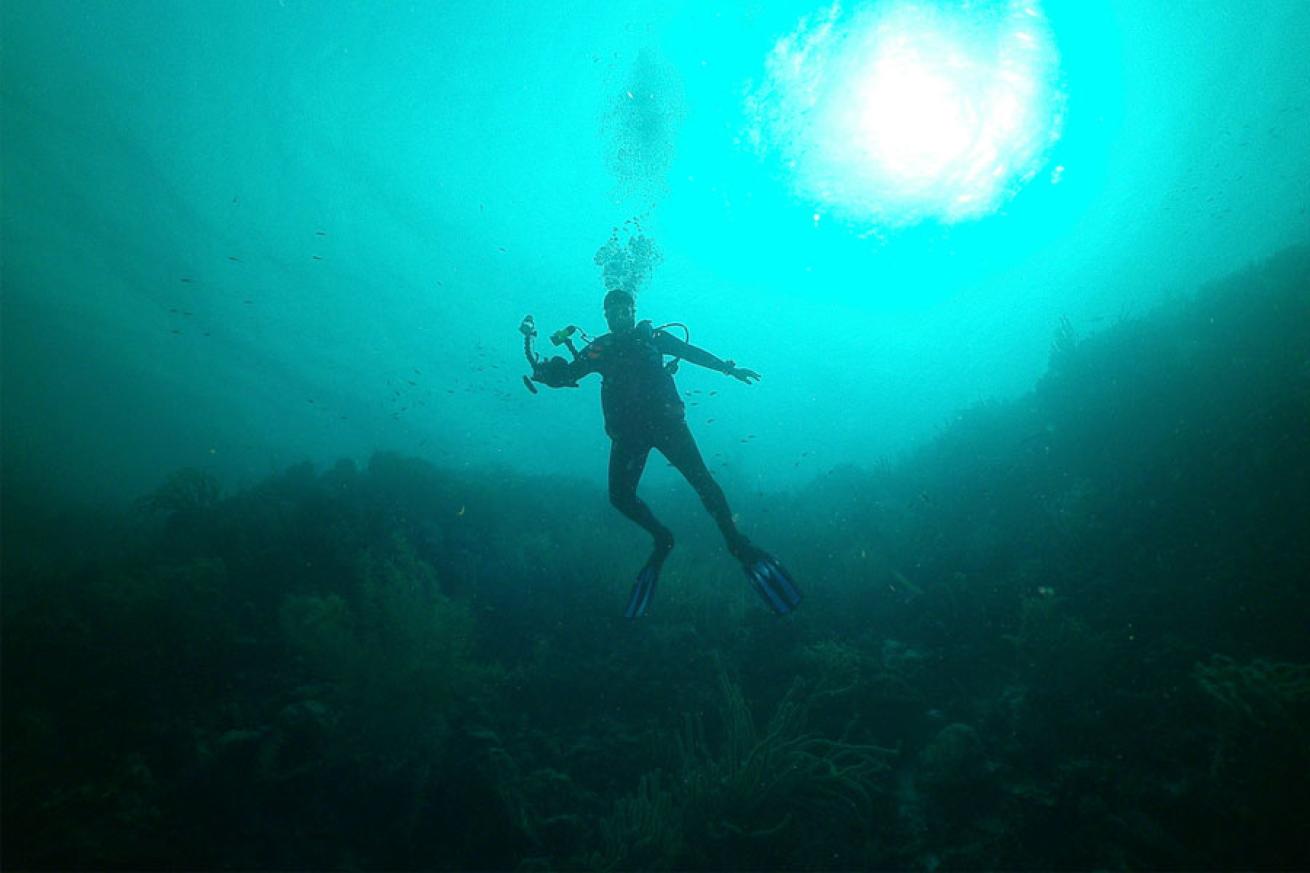
ShutterstockGetting Caught in a Downdraft
During a wall dive you suddenly find yourself hurtling downward at an accelerating pace, caught in a downdraft that's overpowering you. Now what?
1. If you're near a wall or a very large wreck, kick rapidly away from it. Downdrafts are often caused when a horizontal current strikes a wall and deflects downward, or when a current passes over a large object and sinks on the far side like an underwater waterfall. A few kicks should get you into more stable water.
2. If you can't kick out of the downdraft, inflate your BC to slow your descent. But keep one hand on your purge valve so you can dump air as soon as you're out of the vertical current; you don't want to rocket upward when you've escaped the current.
3. If you're on a wall dive, grab it to stop yourself from moving downward, and pull yourself along the wall horizontally to free yourself from the current. This Spiderman move is a last resort, because you'll probably slash yourself up pretty well on the wall.
No. 9: Getting Trapped in a Wreck
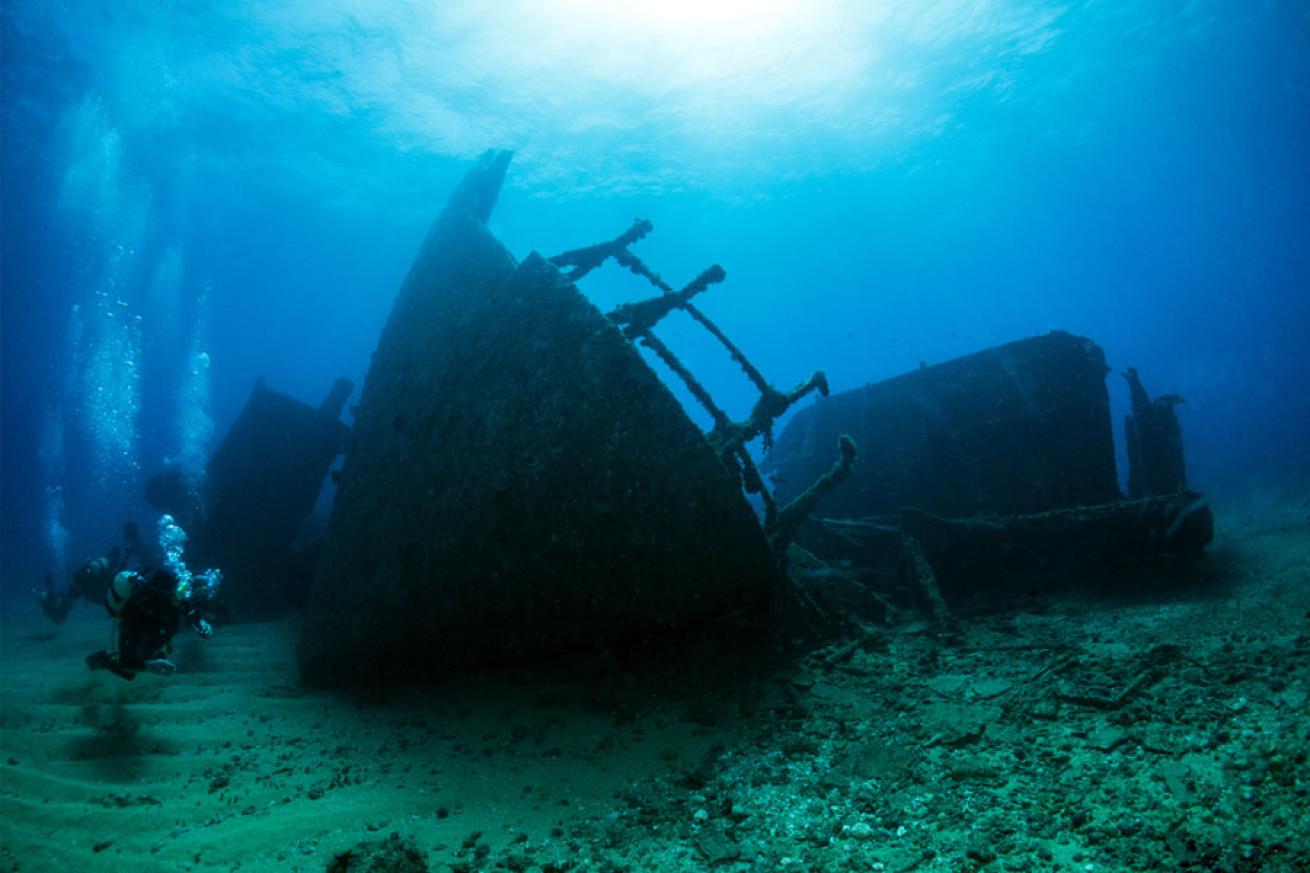
ShutterstockGetting Trapped in a Wreck
If you're not specifically trained for wreck penetration, you shouldn't enter one in the first place. Getting tangled in invisible monofilament is one thing — getting pinned by a ton of steel is another. You're inside and you're stuck. Now what?
1. Determine where you're caught. Move each part of your body to figure out where the resistance is, but do it gently: If you've snagged a hose, you don't want to slice it on jagged metal. Also, minimize movement so you don't stir up silt and reduce visibility.
2. Once you've found the entanglement, use your knife to cut yourself free. If it's only fishing line, hold it with one hand while you carefully cut it with the other.
3. Get your buddy. If you're pinned by a physical object, it's time to be thankful you're diving with a buddy who can add a little muscle. Signal that you have a problem with a side-to-side motion of your light in a wide arc.
4. Don't see your buddy? Cover your light momentarily and you may see your partner's light. Nothing? Shout into your regulator and bang on metal.
5. If you free yourself and you're still alone, exit the wreck and wait by the entry point. If you've become disoriented, cover your beam again and you may see light entering from an opening in the structure.
No. 10: Getting Bent Without a Nearby Recompression Chamber
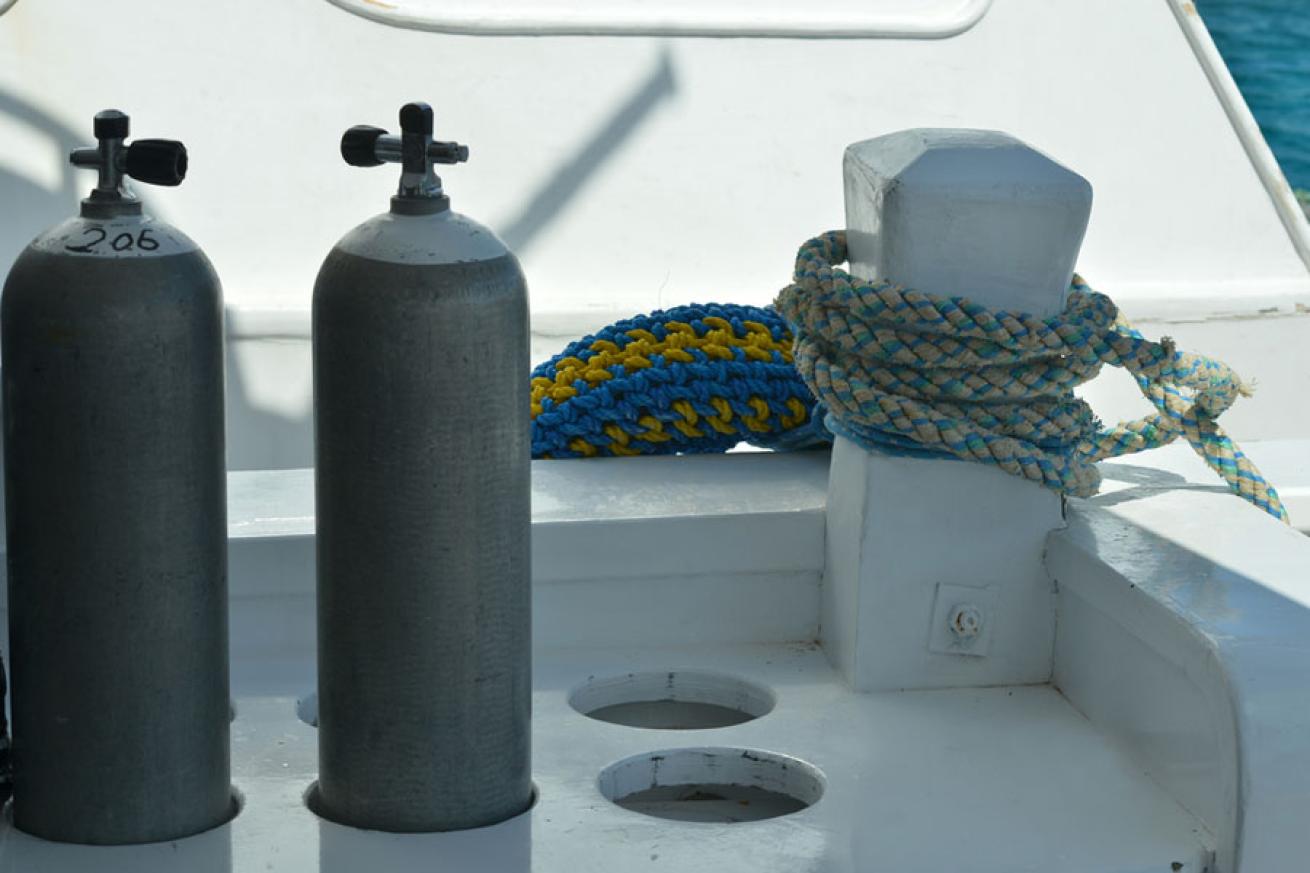
ShutterstockGetting Bent Without a Nearby Recompression Chamber
Due to either poor judgment or bad luck, you're showing the classic signs of decompression sickness after a dive — from pain in your joints to numbness — and you're a full day from the nearest recompression chamber. Later on you can figure out what went wrong, but now what?
1. Don't make another dive, even if your symptoms are slight and you're not sure.
2. Seek medical attention and be prepared for an emergency evacuation. Contact Divers Alert Network and they can help you find the nearest recompression chamber. They will advise you if you have to be transported by plane.










